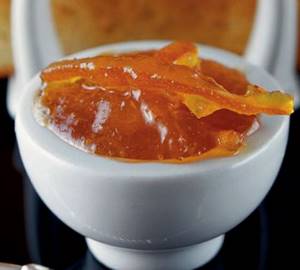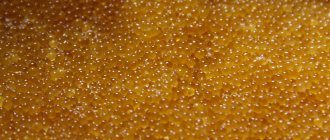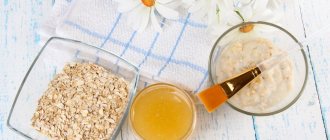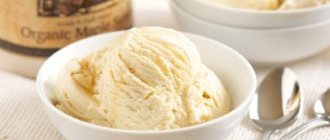Calories, kcal:
Proteins, g:
Carbohydrates, g:
If fruit and berry marmalade is produced in accordance with GOST 6442-89, this is the highest indicator of product quality. When choosing fruit and berry marmalade, pay attention to the appearance of the sweetness. The product is of the correct shape according to its variety, the mass is viscous without lumps or veins. If fruit and berry marmalade is covered with confectionery glaze, the surface of the candy should be glossy without a whitish coating. Diabetic marmalade is not coated with sugar. The packaging in which the marmalade is stored is without damage. Be sure to check the expiration date of the product.
Calorie content of fruit and berry marmalade
The calorie content of fruit and berry marmalade is 293 kcal per 100 grams of product.
Composition and beneficial properties of fruit and berry marmalade
Not many people know the technology for producing fruit and berry marmalade. The fruit and berry marmalade itself is made from processed fruits and berries. To give it sweetness, confectioners add sugar. Fruit and berry marmalade is classified as a product - jellies.
Fruit puree is subjected to prolonged cooking with the addition of gelatin. After the finished mass has cooled, you can give it the desired taste and smell (calorizer). To diversify the assortment, the finished marmalade is sprinkled with sugar or covered with a layer of confectionery glaze.
When choosing fruit and berry marmalade, it is important to pay attention to the components from which it is made. Give preference to a product in which most of the raw materials are applesauce. This component contains pectin, a natural sugar.
For many, marmalade is one of their favorite treats from childhood. Sticky, thick, it often stuck to the teeth and melted in the mouth with sweet drops... It often remains on the list of taste favorites for more than one decade.
But older boys and girls are more interested not in taste (although that is also important), but in the calorie content of marmalade, not in color, but in the naturalness of the composition and health benefits.
The classic set of ingredients for a classic, again, sweet is another confirmation of the rule: “everything ingenious is simple.” To get the perfect marmalade, you need the following ingredients: fruit puree and/or juice, agar-agar (it can be replaced with gelatin), a little sugar.
Most often, apple, apricot or quince pulp is used to prepare this dessert, which is boiled with sugar and agar-agar. The resulting jelly-like mass is poured into molds and allowed to cool and harden - the delicacy is ready for all times.
You can find many useful substances in such sweetness.
Eg:
- pectin, which is found in fruits and perfectly cleanses the gastrointestinal tract, helping it work better;
- iron, potassium, magnesium, calcium - a whole complex of the minerals we need most, which support the coordinated functioning of internal organs, strengthen the cardiovascular system, bone tissue, improve the composition and circulation of blood;
- Glucose is an excellent source of energy, which also helps maintain brain activity;
- The gelling agents contained in agar-agar (an extract from seaweed) and gelatin (extracted from animal tendons and bones) are extremely beneficial for joints and bone cartilage.
Is it good or bad for health?
This question can be answered only if you first answer another question: should you use natural or chemical marmalade? After all, it’s no secret that almost all the viscous dessert on the market today is simply a combination of artificial flavors, colors, flavor enhancers, fillers and thickeners. This marmalade is extremely tasty, aromatic, attractive and harmful to health.
All of its beneficial properties listed above relate to a natural delicacy, which, unfortunately, is rarely found on sale. But if you are lucky enough to find it, feel free to buy it. This dessert can rightfully be called one of the healthiest and healthiest. Moreover, the calorie content of sweets made from natural ingredients is lower than those that contain an insignificant amount of natural ingredients.
In recent years, chewing marmalade has become increasingly popular. Bright pieces are usually painted in several colors at once. This is why children love them so much. Chewy dessert differs from regular dessert in its greater density. Of course, you can spend a lot of fun minutes trying to chew through a multi-colored delicacy, but the benefits of chewing marmalade, especially for a child’s body, are a big question.
It is noteworthy that there are relatively few calories in the chewing product: 321 kcal per 100 grams.
Calorie content of marmalade
And yet, how many calories are in marmalade? This product is curious because its calorie range is very wide. For example, 100 grams of the real thing contains no more than 300 kcal.
A 1 pc. This delicacy will cost 60 kcal. Regular store-bought marmalade “weighs” approximately 330 kcal per 100 grams (1 piece - 66 kcal), but the calorie content of marmalade with all kinds of additives - cream layer, nuts, sugar as a dusting, chocolate - can reach 425 kcal per 100 grams (1 pcs. – 85 kcal).
DIY low-calorie marmalade
If the answer to the question of how many calories are in marmalade scares you away from the rack with sweets, but you still really want to treat yourself to marmalade, try making such a delicacy yourself. 100 grams of this dessert contain only 60 kcal! For this you will need 3 medium sized apples, 1 tbsp. l. gelatin or agar-agar, a pinch of cinnamon.
The fruits need to be baked, the pulp separated from the skin and the core containing the seeds. Beat the pulp with a blender or mixer, add cinnamon or gelatin (agar-agar), stir thoroughly, fill the resulting mass into molds and cool in the refrigerator.
There are incomparably more useful substances in such marmalade than in a regular store-bought or chewing delicacy, but there are many times fewer calories. Bon appetit!
Marmalade is a product with a thick jelly-like consistency, made from the pulp and juice of fruits by thickening them in the process of evaporating water. Traditionally, apples are the raw material for making marmalade, but in England marmalade is most often made from oranges, and in Spain from quinces. The calorie content of marmalade varies depending on the ingredients and raw materials. The high content of pectin and other gelling substances in these fruits makes it possible to produce marmalade without artificial additives, and if the fruits are sweet, then without added sugar.
Seaweed treat
In our country, in the 19th century, they learned to make marmalade, which has no analogues anywhere else in the world. It uses not pectin as a gelling agent, but agar-agar, which is extracted from brown algae growing on the Pacific coast or in the White Sea. Look for a valuable substance in the list of ingredients of the product, because marmalade made from it is incredibly useful for the child’s body: it not only improves digestion, but also becomes an excellent source of iodine for the prevention of thyroid diseases. Agar-agar is supplied to confectionery factories in powder form, where it is diluted with water, mixed with sugar and boiled until thickened. During the cooking process, fruit juice, flavorings and food coloring are added to the delicacy. In this case, they are simply necessary, otherwise the agar-agar marmalade will turn out absolutely transparent and tasteless. The shape and color of algae sweetness can be different, but it will be distinguished from other varieties by its perfectly transparent structure and beautiful “glass” fracture (pectin varieties have a cloudy mass).
How many calories are in marmalade
The manufacturing technology of modern marmalade, in addition to prescription components, allows for the use of various additives that make it possible to produce cheaper and more accessible types of marmalade. How many calories are in marmalade depends on the presence of the type of additives in the final product and the method of its manufacture.
As a gelling component in modern marmalade production, pectin, found in many fruits, is used, agar-agar is an extract from seaweed, and gelatin is a substance extracted from fat-free cartilage, bones and veins of animals. The average calorie content of marmalade per 100 g of finished product is 320 kcal, it contains 0.1 g of proteins, 0.1 g of fat, 79.3 g of carbohydrates.
Depending on the gelling agent used to produce the dessert, marmalade is produced:
- Fruit and berry;
- Jelly;
- Jelly-fruit;
- Chewing.
Video: the benefits and harms of marmalade
April 3, 2020 | views: 11,811
Marmalade is a favorite sweet for many. Because of its composition, it has gained popularity as one of the healthiest delicacies. Being a popular sweet in the USSR, it resembles the taste of childhood. But it was not invented there and not at all in our time. Residents of the Middle East and Mediterranean countries were the first to prepare marmalade. In Europe, he became known during the Crusades in Asia Minor, when Europeans first became acquainted with him.
The marmalade itself is a variant of very thick jam. It is made by long-term cooking of fruits with sugar and the addition of thickeners and other flavoring additives. Agar-agar, which has nothing to do with fruit, was added to marmalade produced in the USSR, but in England this is the name for a product made exclusively from citrus fruits. The most popular types are: chewing, jelly, fruit, citrus and berry.
Marmalade: beneficial properties and calorie content
The classic recipe consists exclusively of natural ingredients, so the benefits of marmalade are undeniable. It is based on components that make jelly from it: pectin, agar or gelatin. What is useful about marmalade is that it contains many useful substances: vitamins PP, magnesium, iron, phosphorus, etc. The average calorie content of this product is 320 kcal per hundred grams, so if you are watching your figure, the benefits of marmalade are questionable and it is not recommended to abuse it.
Marmalade: benefit or harm
The benefit of marmalade lies in the use of natural raw materials. Most often, pectin is used for its production, which is made from a variety of fruits, such as apples. What marmalade is good for women is its overall beneficial effect on the body. It can lower cholesterol levels and restore lipid and carbohydrate balance. Pectin is effective in combating stomach diseases caused by bacteria and accelerates tissue healing after injuries. The benefit of marmalade for women also lies in its ability to rid the body of radionuclides and heavy metals.
The second most popular component for marmalade is agar-agar. It is a gelatin substitute and is made from red algae that grows in the Pacific Ocean, as well as the Black and White Seas. Agar-agar helps normalize liver function, and also helps cleanse your body of various wastes and toxins. Since the algae from which it is produced contain a lot of iodine, it contributes to the normal functioning of the thyroid gland. Eating marmalade on this basis helps improve stomach function and normalize the functioning of the digestive system as a whole.
Due to its fairly high nutritional value, it restores strength well after physical work and improves brain function. Therefore, if your body is weakened during illness or your work requires a lot of energy, the beneficial properties of marmalade will come in handy.
Chewing marmalade: benefit or harm
Unlike classic marmalade, whose history goes back hundreds of years, chewing marmalade appeared relatively recently and immediately became any sweet for many. The basis of chewing marmalade is made up of all the same components as the classic ones - pectin or agar-agar, the beneficial properties of which have already been described above. But often flavors, dyes and preservatives are added to its composition, which make it so beautiful and pleasant. Depending on the type of these additives used, they can be harmful to varying degrees, but they are certainly not beneficial. Often, a wax-fat mixture is used to make chewing marmalade smooth. If it is natural, then it does not pose any harm, but often manufacturers use cheaper vegetable fats, which can be harmful to health. Therefore, it’s up to you to decide whether marmalade that has so many additives is healthy.
Harm of marmalade
Considering the benefits of marmalade made from natural raw materials, we can only talk about its harm relatively, but we also cannot completely discard it.
Marmalade should ideally consist only of natural ingredients. A variety of artificial food additives, which are sometimes contained in marmalade, can cause allergies. Most often it is caused by flavorings or dyes, which are used not only in chewing marmalade, but recently also in regular marmalade. Before buying, look carefully at the composition: classic marmalade consists of pectin (agar or gelatin), sugar, syrup, natural colors and flavors. If natural dyes and flavors are replaced with synthetic ones, then this is already a reason to return the product back to the shelf.
It is prohibited for patients with diabetes to consume marmalade due to the presence of sugar in it. They are better off buying marmalade made from fructose.
Fruit and berry marmalade: calorie content
Pectin is used as a thickener for fruit and berry marmalade, which is produced from the peels of citrus fruits, apples, quinces, watermelons, sugar beets and sunflower baskets. The calorie content of pectin-based marmalade per 100 g is 293 kcal, the product also contains 0.4 g of proteins, 0.0 g of fat, 76.6 g of carbohydrates.
Despite the fairly large number of calories, pectin-based marmalade is very healthy, since pectin has the following properties:
- Reduces blood cholesterol levels;
- Promotes the removal of radionuclides, anabolic steroids, xenobiotics, metabolic products;
- Participates in the normalization of lipid and carbohydrate metabolism;
- Used in the treatment of atherosclerosis and dysbacteriosis;
- Normalizes the functioning of the pancreas and liver;
- Used as a natural sorbent, which is more effective than activated carbon;
- Promotes tissue restoration in wound and burn injuries.
Varieties of marmalade
- Chewing marmalade.
As the name suggests, the treat must be chewed due to its special consistency. This delicacy has a distinct taste that lasts throughout its consumption. Chewing gum marmalade does not melt and has a long shelf life. Delicacies are supplied to store shelves in the form of animal figurines or “worms” known to everyone from childhood. The chewy treat is loved by the younger generation, but it cannot be eaten in abundance. - Plast marmalade.
The technology for preparing this type of delicacy is as follows: fruit or berry puree is combined with granulated sugar, then boiled in several stages and cooled. Usually pectin is added to the composition, which helps harden the product due to its gelling properties. It is extremely difficult to find marmalade in slabs on store shelves. But if you succeed, the product should look like a block of hardened jam. There are practically no harmful impurities in the composition of such a delicacy, that is, the marmalade is considered natural. - Jelly marmalade.
The most common type of treat today. This is the kind of delicacy found on supermarket shelves and markets. Sweetness is produced from a sugar substitute, fruit or berry juice, flavored additives, dyes and syrups. Agar-agar, pectin or gelatin act as a thickener. This marmalade is considered the most harmful of all available options.
benefits and harms of Turkish delight
Jelly marmalade: calories
Jelly marmalade is more delicate in consistency, while dry agar-agar (seaweed) powder is often used as a thickener, in addition to pectin. The composition of jelly marmalade also includes sugar, molasses, fruit essence, food coloring, citric acid, and flavorings. Jelly marmalade based on agar-agar has a brighter color and a beautiful break.
The calorie content of jelly marmalade depends on the composition and can be from 280 to 350 kcal; jelly marmalade is called a carbohydrate dessert, since the protein and fat content in it is zero, and carbohydrates in such marmalade can be from 75.0 to 80.0 g.
Derived from seaweed, agar-agar contains no calories; swelling in the stomach, fiber improves peristalsis, normalizing the functioning of the gastrointestinal tract, and facilitating the functioning of the liver. The main beneficial qualities of agar-agar:
- It is a source of iodine, which the body needs for normal functioning of the thyroid gland;
- The high content of vitamins B5, E, K and iron, calcium, magnesium, copper provides the body with these essential elements;
- Helps eliminate toxins.
Often, when making marmalade, agar-agar can be replaced with gelatin - this is a thickener of animal origin, which is extracted from the veins, cartilage and bones of animals (vegetarians should know about this). This replacement slightly increases the calorie content of marmalade, since gelatin contains fats, but excludes it from the menu of strict vegetarian diets. Useful properties of gelatin:
- Helps improve the condition of hair, skin, nails;
- Participates in strengthening the skeletal system and cartilage.
The benefits of chewing marmalade
Chewing marmalade is not only a low-calorie dessert, but also has a whole range of beneficial properties. This product usually contains pectin, which is made from citrus pomace. This unique gelling substance perfectly cleanses the body and helps remove toxins and radionuclides.
Chewing marmalade on agar contains magnesium and iron and improves the functioning of the liver and thyroid gland. In addition, agar is rich in iodine, calcium, phosphorus and contains vitamins E and K. Including chewing marmalade with natural thickeners in your diet will help reduce cholesterol and blood sugar levels.
Chewing marmalade
gelatin is no less useful: gelatin accelerates the process of tissue restoration, improves the condition of hair and skin.
Thus, a small portion of chewing marmalade will not slow down weight loss and will increase the overall tone of the body. Calorie content
This delicacy compares favorably with other sweets, and healthy dietary fiber compensates for the high sugar content. The main thing is to remember a sense of proportion and not to make marmalade the main dish.
Marmalade is a delicacy that has been loved by many since childhood. When consuming marmalade, we believe that this sweetness contains a minimum of calories and does not cause any harm to our figure. Let's check if this is true.
The calorie content of marmalade is a subject of debate among many experts in the field of healthy nutrition.
. Some confidently claim that this delicacy is low-calorie and recommend it when losing weight, others are categorically against the use of this product, citing the fact that modern marmalade is harmful because it contains a large number of chemical additives. Shall we figure it out?
Chewing marmalade: calories
Recently, chewing marmalade has become especially popular, the use of which, in addition to beneficial nutritional properties, during chewing helps to calm the nervous system, relieves tension and irritation, and reduces the risk of neuroses and stress. Chewing marmalade is coated with a glaze containing natural wax and vegetable fats. Chewing such marmalade cleanses the oral cavity, whitens teeth, and activates digestion.
The calorie content of chewing marmalade per 100 g is 335-350 kcal, it also contains 4.0-4.1 g of proteins, about 0.1 g of fat, 79.0-80.0 g of carbohydrates. Chewing marmalade contains large quantities of:
- Vitamins C and B;
- Calcium;
- Vegetable fats;
- Beeswax;
- Amino acids.
The presence of vitamins and other useful substances helps strengthen the immune system, increases the body's resistance to colds and infections, reduces chronic fatigue, normalizes the functioning of the nervous system and stimulates mental activity.
Despite the significant calorie content, marmalade is recommended to be included in the menu of many diets in moderation due to its beneficial properties. Preference should be given to natural marmalade - this classic dessert is more expensive, but does not contain additives in the form of dyes, flavors, thickeners and is healthier.
The color of natural marmalade is of natural shades, dull, the smell is moderate, the structure is glassy, after compression it does not change shape and does not stick to the packaging. The calorie content of natural marmalade is low, up to 270 kcal.
A new type of marmalade was produced using stevia extract, a perennial shrub that grows in countries with warm climates, as a sweetener. It is a natural low-calorie intense sweetener. Thanks to this replacement, the calorie content of marmalade is reduced to 250-260 kcal, and the nutritional value increases due to the high content of pectins, polysaccharides, vitamins, microelements and antioxidants in stevia. It is this kind of marmalade that is preferable to use in dietary nutrition.
Marmalade is a favorite delicacy of many, not inferior in popularity to other sweets. The dessert is considered extremely healthy, since its main component is condensed fruit and berry juices. Even those with a sweet tooth who want to lose extra pounds can afford a small amount of marmalade. However, before you treat yourself to a delicious dessert, you should find out the calorie content of marmalade and the compositional features of different types of this product.
Chewing marmalade is harmful
A dessert portion of treats is a harmless product consisting of gelatin components with added sugars and color pigment.
It is prepared on a conveyor production line with the addition of gelatin and gelling agents such as agar-agar and pectin. The beneficial properties of marmalade lie in its composition and properties. Gelatin is a healthy animal product - processed animal cartilage, and pectin is of plant origin. Both substances are useful, since pectin, obtained artificially in production from fruit and citrus juices, is not absorbed by the body, but is excreted. He takes with him waste and harmful substances, such as toxins.
This is not the entire structure of the delicacy that is so familiar from childhood. Agar-agar is obtained from algae, but is rarely added to dessert, because the product is too expensive and expensive in terms of extraction and processing.
Also included:
- Sugars that can be beneficial natural or substitutes.
- Fruit and citrus purees are also more beneficial than harmful.
- Juices and nectars are healthy drinks.
You can often see natural ingredients in the composition. There are also synthetic analogues, aromatic and flavor additives. Their properties are different.
A “new” type of jelly, which appeared on sale not so long ago, has a shiny structure, chews for a long time and sticks to your hands. Its properties are different. Sometimes they make baked goods from it, melting store-bought preparations to suit your taste. It contains more useful substances:
- Natural colors and additives obtained from fruits and citrus fruits.
- Fruit type fillers.
- Plant concentrates of nettle and rowan to obtain natural shades rare in nature.
- Syrup.
- Glucose, which is much healthier than sugar or its substitutes.
Advice! If children choose marmalade, it is better to give preference to a new type - it has fewer preservatives, dyes and E-additives (after consultation with a pediatrician).

To make the sweetness so difficult to chew, a “secret” element is added to the composition, which is called a wax-fat mixture. It contains a tenth of beeswax (it forms a light coating on the surface so that fingers do not stick) and vegetable fats.
According to its chemical composition, it belongs to fast carbohydrates, since they account for 63% of the substances. This is sugar - something sweet and tasty can be harmful, but different manufacturers resort to their own proprietary manufacturing scheme.
In general, there are no proteins or fats, so the energy value is low. It also contains a lot of salts and metals that are not absorbed, settling in the kidneys and liver. But there are much fewer of them than in mineral sparkling water from the store.
100 g of product contains 320 kcal, which is 16% of the recommended daily intake. This is a dietary product that is recommended for both diabetics and those on a diet.
There are no useful substances in marmalade if the lion's share of its properties is artificial. But more natural and modern analogues have beneficial properties. There are several types of sweets depending on the chosen gelling agent:
- Fruit and berry - it is made on the basis of fruit and berry preparations in the form of puree.
- Jelly - is based on the gelling agent agar, agaroids or pectin.
- Jelly-fruit - a combination of the two previous techniques.

What are the benefits of garlic for the body, folk remedies, reviews
The benefits and harms of chewing marmalade will be in its quantity - the more sweets a child eats, the more sugar in the blood, therefore, knowing the properties and possible harm, you need to dose the intake (after consultation with a pediatrician). If the body does not accept the properties and composition of the product, it is better to exclude it from the diet so as not to cause harm to health.
Attention! Employees of hazardous enterprises are recommended to use pectin during working hours in order to reduce the concentration of harmful substances in the body.
Apples contain pectin, so with this property, fruit-jelly products will be healthy, tasty and lift your spirits.
It will be useful for the female body to receive a dose of sweets that will not affect the figure. But that's not all:
- Cattle-based gelatin sweetness is good for hair and nails.
- It is also beneficial for the skin with its vegetable oils and their properties.
- The granular proportion of acids will be useful for the functioning of the female organs of the reproductive system.
Those who suffer from kidney failure should not overuse dessert. Some treats contain chemical preservatives (to create flavor), and the properties of such elements can be harmful. Some properties can have a negative impact on well-being.
In the first and third trimester of pregnancy, it is allowed to be taken in the diet of a young mother. You should choose a quality manufacturer that uses natural ingredients. In the second trimester, it is not recommended to consume foods containing acids and animal or vegetable fats. Their properties negatively affect the condition of the fetus.
If these are preservatives and artificial (chemical) components, the harm from them will only increase. In addition, “antibodies” are formed in mother’s milk, which, due to their properties, interfere with the absorption of beneficial substances.
Since during pregnancy the mother prepared the ground for the baby, it is not scary to eat a little sweet in the first days or weeks of life.
Important! Lactation is not just milk and feeding; This is a component that has been processed in terms of its properties, eaten by the mother, and enters the blood in a changed composition.
In the first three months, it is better to avoid not only marmalade, but also other “temptations” of mass production. Marshmallow marshmallows, chocolate delicacies and chips are excluded from the diet, as their properties are not beneficial and can be harmful. When the baby grows up, you can introduce any food that will not cause allergies or diathesis.
When a child is ready for a new food, you can offer him a lot of different foods. By the first year of life, he is ready to try fermented milk products, the benefits of which are obvious. Juices and fruit purees are also introduced.
During the complementary feeding period, the baby learns flavors, but still loves sweet milk.
If the baby constantly eats synthetic food, and not the sweets prepared by the mother, then subsequent stomach diseases are possible.
People who are on a diet can afford a product such as marmalade. Its benefit lies in its low calorie content, and it will not harm your figure. Of course, you shouldn’t replace your entire diet with it alone or make snacks.
This is a dessert that should be consumed at the same time every day. It is advisable to eat sweets before noon, as the body is at the peak of its activity.
You should not combine it with other desserts, only with drinks. Berry jelly marmalade is the best option for those losing weight, since it contains the least amount of vegetable and animal fats.
When dieting, marmalade is consumed in the morning or before lunch.
Diabetics often eat sugar substitutes. This helps when there is too much of it in the blood.
Diabetes of the first and second types is accompanied by low insulin production, but the acquired type is the most “capricious”, since people sometimes have to take insulin every hour.
When you don’t have it at hand, the situation is critical; you should have lollipops or jelly candies on hand. They can be prepared at home, taking into account human needs:
- Peel fruits (apple, pear, plum) and separate from seeds.
- Cut into small pieces.
- Boil and simmer.
- Next, grind again in a blender and simmer in a frying pan.
- When the mass becomes mushy, you need to add sugar or a substitute to taste.
- Pour into molds and cool.
Sodium benzoate: what is it and why is it harmful?

This recipe will yield fruit candies that, due to melted sugar, will keep their shape but have plasticity. You should not add gelatin, as it does not always hold the thick mass of fruit together.
You can diversify the recipe with cardamom, citrus fruits and more. The benefits of marmalade on agar can only be if you buy it in a store. It is difficult to create healthy food at home without such components.
The benefit of jelly-type marmalade will lie in the effect on the body of the substances included in its composition. Jelly is prepared on the basis of natural fruit ingredients, juices, and processed foods.
The usefulness is high, but you should not abuse it. With diseases of the gastrointestinal tract, many adhere to a diet almost always. This is a limitation in sour and pungent components.
Gastritis does not like spicy foods, pancreatitis does not like fatty and salty foods. Marmalade will only be useful if it is made from natural ingredients.
Marmalade is considered a French invention. In fact, in the eighteenth century, which was called polite and “golden,” France showed everyone what this amazing delicacy should be like - then it was made from quince and apples.
In European countries they learned about marmalade in the 14th century, but in the east they have known about it for many years. Some experimenters suggest that the prototype of marmalade was Turkish delight - a delicacy that was prepared from fruits, rose water, starch, honey and other natural ingredients.
Not everyone knows, but before the Crusades there wasn’t even sugar in European countries – and that means jam. Later, American sugar - cane - appeared - it was grown on plantations by slaves, and then - fruit confectionery, preserves, jams and confitures.
And then in France they learned to make marmalade, which was primarily called “hard jam.” Confectioners noticed that a hardening, solid mass comes out when boiled not from all fruits, but from specific types - apples, quinces, apricots.
| Product | Proteins, g | Fats, g | Carbohydrates, g |
| marmalade in sugar | — | — | 79,3 |
| fruit marmalade | — | — | 78,5 |
| marmalade lemon slices | — | — | 81,0 |
| chewing marmalade | 0,9 | — | 83,0 |
| chocolate covered marmalade | 1,6 | 9,3 | 63,1 |
| Substance content | Jelly marmalade | Fruit and berry marmalade |
| Starch and other polysaccharides, g | 8,6 | 1,3 |
| Fiber, g | — | 0,7 |
| Organic acids, g | 1,3 | 0,8 |
| Ash, g | 0,22 | 0,43 |
| Mineral elements, mg | 4,2 | 5,1 |
| Mg, mg | 2,1 | — |
| P, mg | 1,1 | 3,2 |
| Fe, mg | 0,21 | 0,55 |
| Na, mg | 87 | 92 |
| Vitamins B2, mg | — | 0,03 |
| PP, mg | — | 0,017 |
| C, mg | — | — |
- Treats prepared with the addition of artificial ingredients are harmful to the body. Negative qualities are proportional to the amount of flavors, dyes, and chemical additives present in the marmalade.
- The product often causes an allergic reaction and individual intolerance in children and adults. Therefore, buy only natural treats or make them yourself.
- Due to the fact that the product contains a lot of sugar, marmalade is contraindicated for patients with diabetes. Otherwise, a person will experience surges in blood glucose.
- Since sugar is an integral part of the treat, people with diagnosed diabetes are prohibited from consuming marmalade.
- The product has a fairly high calorie content (more than 300 calories per 100 g), so abuse can be fraught with obesity and all related problems.
- Marmalade with various food additives (preservatives, flavorings) is more harmful to health than beneficial. The use of such products can cause digestive problems, allergies, as well as increased sebum production and inflammation of the skin.
- Due to the fact that the product contains a lot of glucose, marmalade facilitates the menstrual cycle. During this period, a treat can eliminate pain in the lower back and lower abdomen, as well as increase hemoglobin levels.
- Marmalade will be useful for lovers of strict diets. While losing weight, enjoy the treat as a dessert in the morning. This way you will prevent irritation and apathy, such symptoms usually appear when there is a lack of sweets.
- Interestingly, marmalade is responsible for the strength of teeth and nails. But only if it is chewable. This same type of sweetness increases brain activity.
- Since the delicacy cleanses the intestinal tract and stimulates digestive processes, a comprehensive cleansing of the body from toxins is carried out.
General information about marmalade
Depending on the preparation method, the composition of marmalade can vary significantly, as it involves the use of a different set of ingredients in production (pectin, agar-agar, flavorings and aromas, etc.).
The number of calories in marmalade also largely depends on the technology of its production. If previously only natural ingredients were used in preparation, now production involves the addition of various preservatives and flavors. And while such additives have a positive effect on the appearance and taste, the same cannot be said about the calorie content and benefits of the product.
Pectin marmalade
Fruit marmalade made with pectin is considered the most natural: in its production, mainly natural products are used - fruits and sugar. Due to the lack of additives, the calorie content of pectin marmalade is low - about 280 kcal per 100 g. Those who are watching their figure are recommended to use this particular marmalade, as it is considered the lowest in calories.
The absence of harmful impurities also affects the BJU - there are no fats, protein - 0.4 g, carbohydrates - 77 g per 100 g of product.
Beneficial features
The natural product has the following effects on the body:
- improves the condition of the pancreas;
- normalizes liver function;
- has the qualities of a sorbent;
- improves metabolism.
Pectin joy
In stores you can often find not faded natural fruit and berry marmalade, but its bright, figured analogue - red balls, green diamonds, yellow stars and other cheerful sweets. It also contains pectin, but it ends up in the product in the form of a semi-finished product. First, sugar-pectin-treacle syrup is boiled, then puree is added to it (or dispensed with) and the necessary flavorings with dyes. This version of the delicacy turns out to be less healthy than pure fruit and berry marmalade, but it also contains pectin, a valuable body cleanser. It’s good if the product contains natural fruit and berry puree. The shape of pectin marmalade can be either in the form of sliced slices, sprinkled with sugar, or all kinds of figures: hearts, beads, stars.
How many calories are in agar-agar marmalade?
The usual jelly-like marmalade, which is also used in the manufacture of chocolate-covered marmalade candies, is obtained by adding agar-agar powder and a number of other components to the fruit component - lemon juice, molasses, sugar, dry egg powder. Synthetic flavors are also sometimes used.
In marmalade based on agar-agar, fats and proteins are completely absent, and the amount of carbohydrates reaches 80 g per 100 g of product.
The calorie content of this marmalade is about 326 kcal per 100 g.
Marmalade for weight loss
Marmalade has some properties that help get rid of extra pounds:
- cleanses the body of harmful substances, including toxins and salts;
- improves the functioning of the digestive system;
- prevents the formation of fat deposits by improving metabolism;
- saturates the body with vitamins and minerals.
In addition, marmalade has a diuretic effect. When consuming the product, excess fluid is removed from the body faster.
Not every variety is suitable for those who adhere to a diet menu.
You should choose a natural product; you can distinguish it by a number of characteristics:
- marmalade should be almost transparent;
- color – muted, dim;
- the composition should not contain synthetic additives.
It is best to eat marmalade before meals (but no more than 1-2 slices), in which case it will suppress your appetite and help reduce the portion of the main dish.
The materials posted on this page are informational in nature and intended for educational purposes. Site visitors should not use them as medical advice. Determining the diagnosis and choosing a treatment method remains the exclusive prerogative of your attending physician.
Similar articles
When following a diet, the best solution is to exclude processed foods from your diet. But sometimes you want to pamper yourself and move away from the tough ones...
Rice is the oldest cereal crop, which is in great demand all over the world. According to research, the average rice consumption of each person...
Watermelon is a familiar and beloved delicacy that has not only a special taste and aroma, but also a number of beneficial properties for the body. Besides,…
McDonald's restaurants are very popular due to their fast service and delicious food. To avoid gaining extra pounds,...
Pizza is a dish of Italian cuisine. Thanks to its taste and variety of cooking methods, it has become known in other countries. What is the calorie content...
The calorie content of marmalade per 100 grams is 295 kcal. A 100-gram serving of fruit and berry sweetness contains:
- 0.4 g protein;
- 0 g fat;
- 76.8 g carbohydrates.
Fruit marmalade made from pectin has a rich vitamin and mineral composition. The delicacy is rich in vitamins B1, B2, E, C, PP, minerals calcium, iron, potassium, sodium, magnesium, phosphorus.
Calorie content of marmalade in 1 piece. depends on the type of sweet. An average sized marmalade slice contains 38 kcal, 0.05 g protein, 0 g fat, 10 g carbohydrates.
Modest fruit and berry
If you want your baby to eat the perfect treat, look for a product called “fruit and berry” in the store. It lies in a continuous layer on a cardboard backing or cut into slices. Unlike most other types of marmalade, fruit and berry marmalade has a faded yellowish color with a slight grayish-greenish tint. At the break, the sweetness has a dark matte structure. This is the healthiest natural marmalade, which is prepared using ancient technology without the use of chemical additives. Most often, for this purpose, they take domestic apples rich in pectin (Antonovka, Ranet), then puree them, add sugar, boil the mixture until completely thickened and cool it. To get lemon slices, pour a bright yellow agar mixture over a half-cylinder mold - this will be the zest. Then they let it harden and make a white layer - to do this, add beaten egg white, starch or skim milk powder to the marmalade mass (there is nothing harmful in these ingredients for a child). As soon as the layer hardens, the mold is filled with a light yellow mixture, which plays the role of lemon pulp. Then the resulting “citrus” is cut into slices and sprinkled with sugar.
Most of the vitamins disappear during the preparation of fruit and berry marmalade, but valuable minerals and a lot of pectin remain - this natural polysaccharide improves digestion and forms compounds with harmful heavy metal ions, radionuclides and pesticides and removes them. That is why this delicacy is also called a “body cleanser” and a “sweet pill.”
The production of fruit and berry marmalade in Russia was revived quite recently, so it is found on the shelves much less frequently than its chemical counterparts, but if desired, a caring mother will definitely find this healthy delicacy.
Calorie content of marmalade lemon slices per 100 grams
The calorie content of marmalade lemon slices per 100 grams is 326.2 kcal. In 100 g of product:
- 0.11 g protein;
- 0 g fat;
- 81.1 g carbohydrates.
To prepare this sweet, molasses, sugar, agar, citric acid, dry lemon juice, dried egg white, flavorings, sodium lactate and curcumin are used.
Thanks to the presence of marmalade in agar, lemon slices are rich in iron, iodine and calcium. Lemon juice used to produce sweets is enriched with vitamins B, C, PP, E, and minerals manganese, calcium, sodium, phosphorus, and iron.
Calorie content of worm marmalade per 100 grams
The calorie content of worm marmalade per 100 grams is 330.2 kcal. In 100 g of product:
- 3.63 g protein;
- 0 g fat;
- 77.1 g carbohydrates.
This marmalade is enriched with vitamin C, which has a beneficial effect on the condition of the heart and blood vessels, and helps to activate the immune functions of the body. Eating sweets normalizes the functioning of the nervous system and helps prevent stress.
At the same time, we should not forget that worm marmalade contains a lot of unnatural flavors and dyes, which can exacerbate diseases of the stomach, intestines, pancreas and gall bladder. Sweet acids have a negative effect on tooth enamel and provoke the development of caries.
The benefits of marmalade
Marmalade made from pectin is traditionally considered the most useful. Such sweets:
- reduce cholesterol levels;
- normalize the metabolism of carbohydrates and fats;
- accelerate the healing processes of burns and wounds;
- provide prevention of bacterial diseases of the gastrointestinal tract;
- cleanse the body of heavy metal compounds;
- normalize liver functions;
- improve gastric motility;
- restore the nervous system and strength after heavy mental and physical stress.











